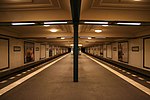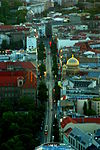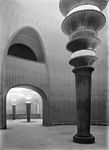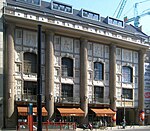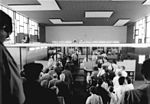Friedrichstadt-Palast
Culture in BerlinEntertainment in BerlinEntertainment venues in GermanyHeritage sites in BerlinPerforming arts in Germany ... and 7 more
Performing arts venues in GermanyRebuilt buildings and structures in BerlinTheatre in BerlinTheatre in GermanyTheatres in BerlinTheatres in GermanyTourist attractions in Berlin
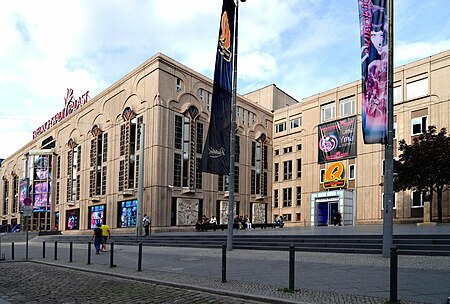
The Friedrichstadt-Palast, also shortened to Palast Berlin, is a revue in the Berlin district of Mitte (district center). The term Friedrichstadt-Palast designates both the building itself, and the revue theater as a body with his ensemble. The present building is distinct from its predecessor, the Old Friedrichstadt-Palast (former Grosses Schauspielhaus located near Schiffbauerdamm), and therefore now also called the New Friedrichstadt-Palast.
Excerpt from the Wikipedia article Friedrichstadt-Palast (License: CC BY-SA 3.0, Authors, Images).Friedrichstadt-Palast
Friedrichstraße, Berlin Mitte
Geographical coordinates (GPS) Address Phone number Website External links Nearby Places Show on map
Geographical coordinates (GPS)
| Latitude | Longitude |
|---|---|
| N 52.523907 ° | E 13.388797 ° |
Address
Friedrichstadt-Palast
Friedrichstraße 107
10117 Berlin, Mitte
Germany
Open on Google Maps


